
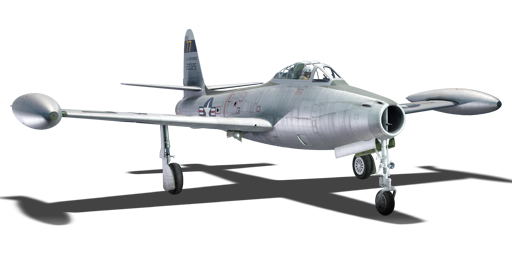


The F-84G-21-RE is an American strike aircraft. It was introduced in Update 1.77 "Advancing Storm".
Republic Aircraft Company's jump into the jet fighter market was not as smooth as they would have liked. They experienced severe growing pains as they developed and produced the F-84 series aircraft, especially the B, C, D and E variants. Important upgrades and modifications included a more powerful turbine engine, strengthened wings, aerodynamically secure wing-tip fuel tanks and a strengthened structure. The resultant of these upgrades was the much improved F-84G fighter, which boasted new innovations such as improved avionics, radar, the capability of in-flight refuelling and ability to carry a Mark 7 nuclear bomb. Though the operationally longest lasting of the series with the United States (into the mid-1960s), several other nations continued to use it including France, Italy and Taiwan (Republic of China), however, Greece continued flying their fighters until 1991.
Even with the changes from earlier models, even in-game pilots will notice the quirkiness of the F-84G. Noted for its nickname "Lead Sled", the F-84G, like the B version in-game has an extremely long takeoff roll, around 1,500 m, typically due to the heavier payloads afforded to this aircraft. Though, once at altitude and during attack runs, the F-84G is an incredibly stable platform and can be outfitted with a number of various suspended armaments along with its six 12.7 mm M3 Browning machine guns. Each gun only has 300 rounds of ammunition, therefore trigger control is necessary or else the pilot will be left with empty guns in short order. Considered a multi-role aircraft, the F-84G can be utilised as a fighter-interceptor, bomber interceptor and ground attack fighter. The F-84G can be laden with a variety of bombs ranging from 100 lbs all the way up to two 1,000 lb bombs. HVAR and Tiny Tim rockets are a viable option alone or mixed with bombs to expand the options of targets to be attacked depending on the map the pilot is flying in.
Like many jet fighters, flying slowly makes for an easy target and this is no exception for the F-84G. Speed is necessary to ensure manoeuvrability both to engage a target and to shake a tail. Though not the fastest fighter at this rank, the F-84G can hold its own and when pressed, the six centre lined M3 Browning machine guns can punch enough holes in an enemy fighter to bring it down. Don't expect this fighter when laden down with two 1,000 lbs bombs or two Tiny Tim and 24 HVAR rockets to excel in a dogfight as it won't with all that weight, however, after all that ordnance is released the F-84B can then mix it up, though it is preferable to maintain speed while performing Boom & Zoom manoeuvres.
While dealing with mixed reviews over its positive and negative aspects, the F-84 series aircraft paved the way for a later aircraft which magnified all of the positive qualities of the F-84, being a stable firing platform, loaded to the gills with assorted suspended armaments and a main gun which rained destruction on the enemy, this aircraft would later be known as the Fairchild-Republic A-10 Thunderbolt II.
flaps
flaps
flaps
brake
| Belt | Belt filling | Armor penetration (mm) at a distance: | |||||
|---|---|---|---|---|---|---|---|
| 10 m | 100 m | 500 m | 1000 m | 1500 m | 2000 m | ||
| API-T/AP/AP/I | 30 | 27 | 20 | 13 | 9 | 6 | |
| AP-I/AP-I/API-T/I/I | 28 | 26 | 18 | 11 | 7 | 4 | |
| API-T/I/AP/AP/AP-I/AP-I | 30 | 27 | 20 | 13 | 9 | 6 | |
| API-T | 28 | 26 | 18 | 11 | 7 | 4 | |
| AP-I/I/AP-I/I | 28 | 26 | 18 | 11 | 7 | 4 | |
| Name | Weight | Slot | ||||||||
|---|---|---|---|---|---|---|---|---|---|---|
| 6 × | 376.8 kg | 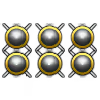 |  | |||||||
| 3 × | 188.4 kg | 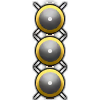 |  |  |  | |||||
| 4 × | 251.2 kg | 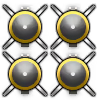 |  | |||||||
| 534.2 kg | 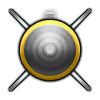 |  | ||||||||
| 49.9 kg |  |  | ||||||||
| 117.9 kg |  |  | ||||||||
| 242.6 kg |  |  | ||||||||
| 500.8 kg | 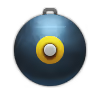 |  | ||||||||












Flight performance | |
|---|---|
Survivability |
|---|
Weaponry | ||
|---|---|---|